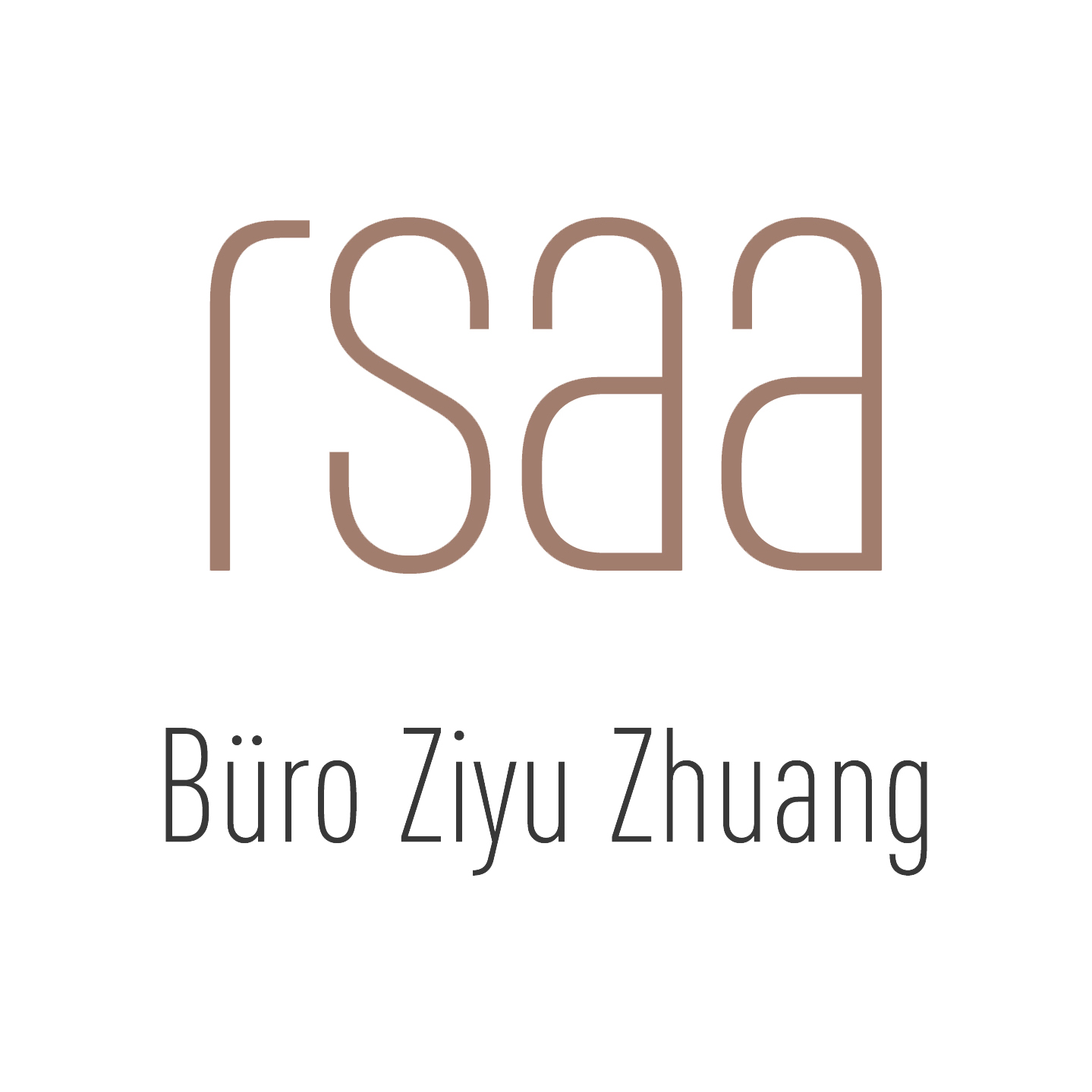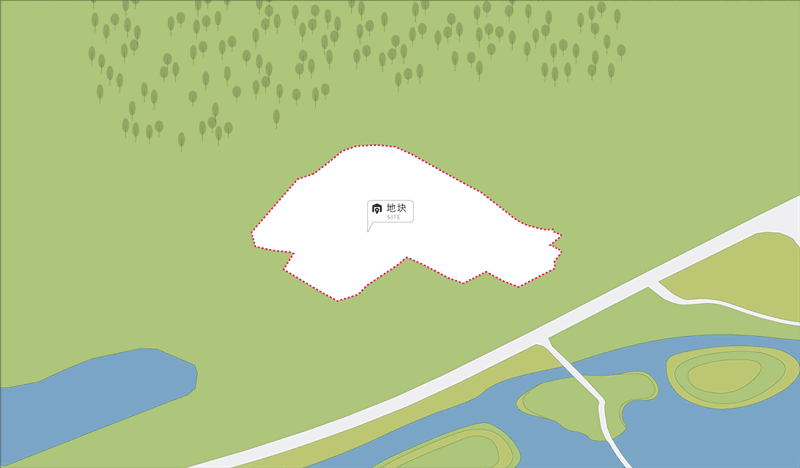查看完整案例


收藏

下载
成都市下属崇州市历史悠久、文化底蕴深厚,滋养了陆游、杜甫、王勃等文人墨客的璀璨诗篇,传承着川西古风、古韵和古貌。林盘,作为一种川西地区由来已久的居住空间形态,融合了本地的气候特征、人文特质,以及本地人群的居住习惯和生活方式等诸多元素。本项目旨在将林盘原型与中国画的散点透视阅读方式在空间层面进行一系列叠合重组,以期在建筑的内外体验中获得更丰富的空间变化和叙事可能。
The Cropland Loop Resort is a high end hotel in the county of Chongzhou in Chengdu, China. Its shape is defined by a large dominant roof that shelters a variety of functions, each of them housed in an individual volume.
▼项目概览,project preview ©存在建筑-- 建筑摄影
项目地处崇州市白头镇石滚堰,基地北邻桤木河湿地公园,东临公园接待中心,周边农田遍布,环境优美,气候宜人。项目在基本条件上具备了独一无二的优势。
基于这样的环境意向,建筑方案设计以大量针对川西民居的研究为起始,在这个传统原型中,有屋、有院、有林、有水、有田……它满足了一切人们对传统生活居所需求的想象,甚至是当代都市人群田园生活的样本。
One of the main challenges of the design was to set a large scale building in the middle of a rural cropland. In search of an answer to this, our focus shifted to the direct surroundings of the project site, where several groups of small houses have defined the region’s character for generations. Farming crops has a long tradition in the area, and the local residents erected small clusters, each consisting of a pond, trees, crops and the people’s dwellings. This has been forming a pleasant microclimate, offering shade and a cool breeze in a particularly hot area.
▼项目鸟瞰,aerial view©存在建筑-- 建筑摄影
▼项目基地航拍,site aerial view
▼林盘环境特征,context
据此我们从类型学分析的角度确定了方案中应该存在的“屋++ 院”、“屋++ 树”、“屋++ 屋”、“屋++ 田”、“屋++ 檐”、“屋++ 水”等几种原型组合方式,并在之后的设计中加以拓展和转译。
This cluster serves as the design prototype: A building with yard and trees, cropland around it, plentiful water to cool the air, and cantilevering roofs to provide shelter from the sun.
▼林盘空间类型拆解,prototype diagram©RSAA/庄子玉工作室
另一方面,中国山水长卷中对于景观与空间流动感的营造,以及对于上述林盘空间类型样本的重组,是我们在本案中尝试的另一种空间可能。传统山水长卷中的散点透视画法,在一幅画作中展示了多重空间叙事叠合的可能性。这与当下项目开发所面临的多元需求、多重场景的运营诉求不谋而合。在一个长轴的空间上,许多的故事与生活如画卷般徐徐展开。
▼宋画长卷《清明上河图》及散点透视,Riverside Scene at Qingming Festival, Song Dynasty
我们在之前的项目铜陵山居中,对类似的叙事结构与空间组织方式有过尝试。檐下空间与山体的呼应、卧室交叠的外墙、中断二分的屋脊与庭院、入口挑高的铜门、末端飞檐与山体的对话,这一个个独立的故事线索成为一个在横向关系里连续的画面。
The above mentioned roof is the first image an observer sees from afar. Its distinct shape serves as an eyecatcher and transforms the Chinese traditional architecture of long horizontal buildings into a modern shape. Based on this starting-point we used our experience from a previous project, the Tongling Recluse, to create a building that is defined by intimate views, as opposed to a monolithic appearance. The result resembles a Chinese scroll painting. A unified image that wraps around the building, but when given a close up look it dissolves into individual scenes and moments.
▼铜陵山居立面中的散点透视,perspectives of Tongling Recluse, a previous project by RSAA/Büro Ziyu Zhuang ©RSAA/庄子玉工作室
▼铜陵山居散点透视图解与散点叙事空间呈现,theperspectives and the spatial narrative of Tongling Recluse project©RSAA/庄子玉工作室
作为叙事的载体,铜陵山居的展开面显然十分有限,林盘行馆作为建筑体量几十倍于铜陵山居且功能形式更为丰富多样的酒店业态,其“画卷”俨然需要更宽广的纵深。于是我们在设计之初,结合地块的基本功能划分和排布,设计一套与功能体块相对应的“功能长卷立面”,这其后是不同功能所对应的空间叙事体系。
Despite the complexity of the images created, the different functions of the compound follow a regular grid, allowing the construction cost to stay within a reasonable frame. It is the illusion of complexity, that defines the project.
▼铜陵山居的空间叙事立面 x5,narrative facade ofTongling Recluse project©RSAA/庄子玉工作室
▼林盘行馆的空间叙事立面长卷,the scrolling spaces of the Cropland Loop Resort©RSAA/庄子玉工作室
▼林盘行馆空间叙事立面长卷的立体卷曲,thethree-dimensional volume made of thescrolling spaces©RSAA/庄子玉工作室
屋檐作为一个重要的空间整合要素,将二维化的“功能长卷立面”在三维空间上进行多向的延展。在这一系列的空间交叠关系中,传统林盘背山望水,林木其间,屋院融合的空间特质得以再现,同时丰富的空间变化又给建筑带来了非常当代的空间体验与全新的空间类型。
▼空间叙事立面长卷卷曲后的空间图解及叙事方式的多样呈现,spatial diagram of the rolled volume and the diverse presentation of the spatial narrative©RSAA/庄子玉工作室
▼空间体验类比,spatial experience comparison©RSAA/庄子玉工作室
在其中,屋、檐、田、水、树以及人,都变成了这卷曲长卷中流动的元素与意向。建筑的体验者与建筑元素,自然元素在此融为一体。
▼项目插画,project illustration©韩锐森吉
项目的主要功能由接待、住宿、休闲、餐饮、文化等几大部分构成,并通过类环形的流线设置形成明确的功能分区。方案最大化利用了红线内的土地资源,在满足退线和必要的交通空间要求后形成最大化的建筑基底,基于传统川西林盘体系中的空间模式来组织功能体块,鳞次栉比,绿树其间,水系环绕。
The dimension of the roof and the enclosed yards allows different functions to be in line of sight of each other, but spread out to allow a clear separation. The resulting loop allows for a sheltered walk along bars and restaurants, passing the lobby and ultimately leading to the hotel rooms. The position of each function creates a pattern of volumes and voids, that draw the surrounding croplands visually into the heart of the building. Emphasizing this connection of inside and outside are water features, which blur the boundaries even further.
▼体块生成图解,massing diagram©RSAA/庄子玉工作室
▼平面图,plan©RSAA/庄子玉工作室
在城市里之中又有乡村的气质的概念中,建筑里的边界概念是被模糊的,能看到我们对具体功能的定位是一个多维化的发散结构。这种形式给建筑本身带来了流动性以及不同的功能及边界之间转换的可能。这种转换不仅体现在对于功能流线上的定位,在整个建筑看到的空间状态上,也呈现出若隐若现的空间渗透感和透明性。
▼雾气中的林盘行馆,theCropland Loop Resort in the mist©存在建筑-- 建筑摄影
▼稻田景观及建筑远景视角,a distant view to the buildingfrom the rice field©存在建筑-- 建筑摄影
建筑在不同的环境的气氛下的视觉呈现非常丰富,比如在有雾气的时候,川西林盘这种地貌是一种清晨的状态,建筑的这种流动感,若隐若现的感觉使得体验感更为丰富。
▼流动的建筑,a fluid building©存在建筑-- 建筑摄影
在屋面本身的这种特质关系里面,我们能看到林盘行馆相对周边建筑的体量较大。作为一个公建体量,我们需要去平衡它跟周围小建筑的关系,设计出建筑自身的散点功能性关系,同时要平衡工业化气质并具有仪式感的空间。
▼屋顶视角,roof top view©存在建筑-- 建筑摄影
▼屋面细节,roof detailed view©存在建筑-- 建筑摄影
▼西立面图,west elevation©RSAA/庄子玉工作室
▼北立面图,north elevation©RSAA/庄子玉工作室
在这里面我们能看到不同尺度和不同功能之间的一系列转换,这也是我们希望在建筑里呈现的,既是建筑化的状态,同时又是一种园林化甚至城市化的状态。
▼夜间庭院视角,courtyard view by night©存在建筑-- 建筑摄影
在建筑之上,不同的角度可以看到不同的画面。比如建筑本身有不同的标高,包括建筑的端头挑出去的部分,可以远眺远处的雪山。在这样一个流线的状态下,从不同的角度、不同的标高以及不同的框景关系之中,可以获得完全不同的空间体验。
At the heart of the building lies a multifunction room, which is elevated above the loop itself. It offers a special space, emphasized in its importance by its location and the stairs leading up to it. Beyond that it serves as a viewfinder, focussing on the snow mountain in Chengdu, reaching above 5000m height. Its top is covered by snow for large parts of the year, despite the regional climate.The result of this process is a building aware of its vernacular tradition. At the same time it does not hide its ambitions and the era it is built in.
▼流线状态带来完全不同的空间体验,thestreamline creates a completely different spatial experience©存在建筑-- 建筑摄影
▼剖面图,sections©RSAA/庄子玉工作室
不光是建筑自身在平面上的边界感和体验感,在内外的交织关系里,甚至建筑后面的关系,很难去定义这种内外和上下的变化。我们希望是非常融合式的体验,一种没有边界无边界性的具有流动感的体验方式。
▼无边界的流动体验,aborderlesscirculation©存在建筑-- 建筑摄影
从入口处将功能设定为由公共性至私密性环绕排布,并通过中庭空间的景观处理形成相对的公私区域划分;功能分布同时回应场地不同方向的环境因素:面向西岭雪山出挑的展厅,面向稻田景观展开的客房,面向街面展开的入口庭院,面向内庭院形成的内檐游廊与活动大台阶。
▼面向内庭院的内檐游廊与活动大台阶,thecovered corridor and the grand staircase facing the internal courtyard©存在建筑-- 建筑摄影
建筑与景观穿插交互,不同功能相互独立而又互为呼应,和林盘原型中的空间形式类似而又更具当代的空间品质感。连续的屋面体系如游龙穿梭,传承了川西建筑的灵魂。建筑在平面和剖面上相互重叠、穿插,形成丰富的室内和室外空间。同时,由于内部卷曲的檐口和功能流线,传统矩形进院体系的院落空间也得以异化成为多个具有独特空间属性的分属小庭院。
▼游廊夜景,the corridor by night©存在建筑-- 建筑摄影
连续剖面及原型空间序列,thecontinuous sections and the spatial sequence of the prototypes©RSAA/庄子玉工作室
▼檐下空间,under theroof©存在建筑-- 建筑摄影
连续的屋面体系如游龙穿梭,the continuous roof system©存在建筑-- 建筑摄影
竹林、小型造景、建筑外层的稻田和穿插于建筑的水面共同构成了建筑群的景观基底,形成了林中有屋、屋间有林、屋旁有田,田中有林的多层次景观空间。最大程度地通过设计方案将川西林盘的景观体系浓缩在基地中。在满足功能需求的同时,得到了屋院结合的人文自然建筑空间。
▼多层次景观空间,a multi-layered landscape©存在建筑-- 建筑摄影
林盘行馆作为庄子玉工作室一系列当代空间原型探索的开始。从项目迭代图示也可以看到相互间的连续性。这些迭代图示是项目在形式层面的反馈,而大多数人最后体验到的其实也是形式,阅读到的是关于建筑的语汇,其实它们都只是表象,呈现的端口可以是多样的,但背后的许多观念是延续的。
▼鸟瞰,aerial view©存在建筑-- 建筑摄影
▼总平面图,site plan©RSAA/庄子玉工作室
庄子玉工作室项目关联及视线分析,sight analysis and comparison among the projects by RSAA/Büro Ziyu Zhuang © RSAA/庄子玉工作室
▼庄子玉工作室项目迭代图解,the iteration diagrams of the projects by RSAA/Büro Ziyu Zhuang © RSAA/庄子玉工作室
项目地点:成都崇州项目类型:酒店设计建筑面积:5134 平方米设计时间:2018 年业主单位:四川国弘崇展现代服务业投资有限责任公司业主代表:吴亚平业主项目管理:王昭希,李从波,黄锦江,涂成昱,丁世东建筑及室内设计主创团队:RSAA/庄子玉工作室项目主创:庄子玉建筑设计部分:任中琦,喻凡石,魏熙,陈俊刚,刘力源,叶子辰室内设计部分:李娜,赵欣,谢欣慧,靳若兮,范宏宇,星梦钊,郭振荣,汪宁 (实习生),张雪楠(实习生)EPC 建设单位:华西六建项目总负责:王立平技术负责人:王勇建筑施工图配合团队:四川省建筑设计研究院项目总负责:白今,王保磊;建筑专业:江玉林;结构专业:王保磊,钟睿,王兴华;给排水专业:袁希;强电专业:肖飞;暖通专业:姚盼室内施工图配合团队:亚厦西南设计研究院项目总负责:冷茂;施工图:张瑞,马祯骅,王朔华,黄文,王昌宇,魏莱希钢结构施工及配合团队:北新钢构负责人:段凌潇,苟泽彬,黄永超,聂渊摄影:存在建筑-- 建筑摄影
Project Information
Project Location: Chongzhou, Chengdu
Type: Hotel Design
Floor Area: 5134 ㎡Design Time: 2018
Owner: Sichuan Guohong Chongzhan Modern Service Industry & Investment Co., Ltd.
Owner Representative: Yaping Wu
Owner Project Management: Zhaoxi Wang, Congbo Li, Jinjiang Huang, Chengyu Tu, Shidong Ding
Architectural and Interior Design Team: RSAA/Büro Ziyu Zhuang
Lead Architect: Ziyu Zhuang
Architectural Design: Zhongqi Ren, Fanshi Yu, Xi Wei, Jungang Chen, Liyuan Liu, Zichen Ye
Interior Design: Na Li, Xin Zhao, Xinhui Xie, Ruoxi Jin, Hongyu Fan, Mengzhao Xing, Zhenrong Guo, Ning Wang (intern), Xuenan Zhuang (intern)EPC Construction Unit: Sichuan Huaxi No. 6 Constrution Group Co., Ltd.
Project Manager: Liping Wang
Technical Person in charge: Yong Wang
Architectural Drawings Cooperation Team: Sichuan Architectural Design & Research Institute
Project Manager: Jin Bai, Baolei Wang ; Architect: Yulin Jiang; Structure: Baolei Wang, Rui Zhong, Xinghua Wang; Water Supply and Drainage: Xi Yuan; Strong Power: Fei Xiao; HVAC: Pan Yao
Indoor Construction Drawing Team: Yasha Southwest Design & Research Institute
Project Manager: Mao Leng; Construction Drawings: Rui Zhang, Zhenhua Ma, Shuohua Wang, Wen Huang, Changyu Wang, Laixi Wei
Steel Structure Construction and Coordination Team: Beijing New Building Material (Group) Co., Ltd. (BNBM Group)Person in charge: Lingxiao Duan, Zebin Gou, Yongchao Huang, Yuan Nie
Photo credits: Arch-Exist Photography



























































